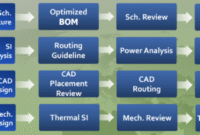Tools That Tell Stories of Work, Craft, and Dedication – Tools That Tell Stories of Work Craft and Dedication invites you to explore the fascinating world of tools that serve as silent narrators of human effort, artistry, and perseverance. From the humble pencil to advanced machinery, each tool has its own tale, echoing the dedication and craftsmanship of those who wield them. This journey through the realms of work and creativity uncovers not only the functionalities of these instruments but also the profound stories they hold.
In understanding the significant role of these tools, we dive into their historical evolution, the techniques associated with their usage, and the impact of technology on craftsmanship. Whether it’s through artistic endeavors or skilled trades, the tools we use reflect our commitment and passion, making them worthy subjects of exploration.
In today’s fast-paced digital world, where information is at our fingertips, the importance of effective communication cannot be overstated. Whether it’s through emails, social media, or face-to-face interactions, how we convey our thoughts and ideas plays a critical role in our personal and professional lives. In this article, we will delve into the nuances of communication, exploring its various forms, the challenges it presents, and strategies to enhance our skills.
### Understanding Communication
At its core, communication is the act of transferring information from one entity to another. This can be a simple exchange of words or a complex interaction involving body language, tone, and context. Effective communication is not just about speaking or writing well; it’s about ensuring that the message is understood as intended by the receiver.
#### The Elements of Communication
1. Sender: The individual or group who initiates the message.
2. Message: The information, ideas, or thoughts that the sender wishes to convey.
3. Medium: The channel through which the message is transmitted (e.g., spoken words, written text, visual aids).
4. Receiver: The individual or group who receives and interprets the message.
5. Feedback: The response from the receiver back to the sender, indicating whether the message was understood.
### Types of Communication
Communication can be categorized into several types, each serving unique purposes and contexts:
1. Verbal Communication: This includes any spoken or written form of communication. It is direct and often the most straightforward way to convey messages.
2. Non-Verbal Communication: This encompasses body language, gestures, facial expressions, and tone of voice. It often conveys more meaning than words alone and can significantly impact how a message is received.
3. Visual Communication: This involves the use of visual elements to convey information, such as graphs, charts, and images. In an increasingly visual world, the ability to communicate ideas through visuals is becoming more critical.
4. Digital Communication: With the rise of technology, digital communication methods like emails, social media, and instant messaging have become prevalent. Each platform has its own etiquette and style, making it essential to adapt accordingly.
### The Challenges of Communication
Despite its importance, effective communication can be fraught with challenges. Here are some common hurdles individuals face:
1. Language Barriers: In a globalized world, communicating across different languages can lead to misunderstandings. It’s crucial to be mindful of cultural nuances and language proficiency.
2. Misinterpretation: Messages can be misinterpreted due to ambiguity or lack of context. Ensuring clarity in your message is vital to avoid confusion.
3. Emotional Barriers: Emotions can greatly affect how messages are sent and received. A stressed or angry individual may misinterpret messages or respond inappropriately.
4. Technological Issues: In digital communication, technical problems such as poor internet connectivity or software glitches can hinder effective exchanges.
### Strategies for Effective Communication
To enhance communication skills, consider the following strategies:
1. Listen Actively: Effective communication starts with good listening. Pay attention to what the other person is saying without formulating your response while they speak. This fosters a respectful dialogue and ensures you understand their perspective.
2. Be Clear and Concise: Avoid jargon or overly complex language. Use straightforward expressions to convey your message. Being concise helps keep the listener’s attention and makes the message more memorable.
3. Adapt Your Style: Different situations call for different communication styles. In a formal setting, use professional language, while a more casual tone may be appropriate with friends or in informal meetings. Always consider your audience.
4. Provide Feedback: Encourage feedback and ask questions to ensure your message has been understood. This can open up further dialogue and clarify any confusion.
5. Practice Empathy: Try to understand the feelings and perspectives of others. Empathy can improve relationships and foster a more supportive communication environment.
6. Utilize Technology Wisely: Use communication tools that best suit your message. Video calls, for example, can enhance personal interactions compared to emails or texts, especially for complex discussions.
### The Role of Technology in Communication
In recent years, technology has transformed how we communicate. Here are some key advancements that have influenced our communication landscape:
1. Social Media: Platforms like Facebook, Twitter, and LinkedIn have changed how we connect with others, allowing instant sharing of information and opinions. However, they also require careful management to avoid misunderstandings and negative interactions.
2. Video Conferencing: Tools like Zoom and Microsoft Teams have made remote communication more accessible. These platforms allow for face-to-face interaction, which can enhance understanding and collaboration, even from a distance.
3. Instant Messaging: Apps like WhatsApp and Slack foster quick communication, making it easy to connect with colleagues or friends. However, the immediacy of these platforms can lead to miscommunication if not used thoughtfully.
4. Email: While traditional, email remains a cornerstone of professional communication. Mastering effective email etiquette is crucial to convey professionalism and clarity.
### The Future of Communication
As we look ahead, the future of communication appears to be evolving rapidly. Here are some trends to watch:
1. Artificial Intelligence: AI tools are increasingly being used to facilitate communication, such as chatbots for customer service. Understanding how to interact with AI will be essential.
2. Augmented and Virtual Reality: These technologies are beginning to play a role in communication, offering immersive experiences for meetings and presentations. Understanding these tools will become vital as they gain popularity.
3. Cross-Cultural Communication: As the world becomes more interconnected, the ability to communicate across cultures will be invaluable. Learning about cultural differences and being adaptable will enhance global interactions.
4. Data Privacy: With the rise of digital communication comes the need for data security. Understanding privacy implications and practicing safe communication online will be crucial.
### Conclusion
Effective communication is an art that requires practice and adaptation. By understanding the various forms of communication, the challenges we face, and implementing strategies to improve our skills, we can foster better relationships both personally and professionally. As technology continues to evolve, staying informed and flexible will help us navigate the future of communication with confidence and ease. Remember, at the heart of every effective communication is a genuine effort to connect with others and share ideas meaningfully.
In conclusion, the exploration of Tools That Tell Stories of Work Craft and Dedication reveals the intricate relationship between humans and their tools, underscoring the artistry behind every creation. As we appreciate the narratives embedded within these instruments, we are reminded of the dedication and hard work that shape our world. Acknowledging the stories they tell encourages us to honor the craftsmanship in every tool and the hands that skillfully use them.
FAQ Section: Tools That Tell Stories Of Work, Craft, And Dedication
What types of tools tell stories of dedication?
Tools range from everyday items like hammers and brushes to specialized equipment used in various crafts, each carrying the narrative of the labor and creativity behind their use.

How can we appreciate the stories behind tools?
By understanding their history, the techniques involved in their usage, and the cultural significance they hold, we deepen our appreciation for the craftsmanship and creativity they represent.
What role does technology play in modern craftsmanship?
Technology enhances craftsmanship by providing advanced tools that improve efficiency and precision, while also preserving traditional methods through digital documentation and sharing.
Are there any challenges in storytelling through tools?
Yes, challenges include conveying the emotional narratives behind tools and ensuring that the cultural context of their use is accurately represented.
How can I learn more about the craft behind tools?
Engaging in workshops, reading about various crafts, and connecting with artisans can provide deeper insights into the stories and skills behind the tools used in different trades.



